is it ok to put soil directly on grass when filling raised beds?
sophigirl
14 years ago
Featured Answer
Sort by:Oldest
Comments (13)
ericwi
14 years agoRelated Discussions
What soil do i fill my raised beds with?
Comments (6)Let's consider two issues in turn: what kind of soil, and then how much. The quality of your produce is directly related to the quality of the dirt they grow out of. This makes sense, because plants consist of energy from the sun, oxygen and carbon from the atmosphere, and matter from the soil in which they live. Therefore, it is worth your while to make sure that your beds are full of good dirt. You want to pay attention to a few factors in garden soil, mainly nutrient content and drainage. Once you know what you want, you can buy cheap ingredients and mix them to get what you desire. Base: good ol' dirt A good base for a garden soil mix is the cheap topsoil that you can get at your garden center. Lots of stores sell topsoil for cheap in the spring, like maybe $2 or less for a 40-pound bag. That seems like a lot of dirt, but it's really a negligible amount once you start filling in your bed. Nutrients: compost & peat moss You also want to have a lot of nutrients, so it is a good idea to add in some compost. It's great if you're making it, if not they sell it at garden stores. It's incredibly rich, so it's okay to mix in only a bag or two per raised bed. Peat moss is also a good idea, as it is full of organic matter. It comes in big bags, and is really concentrated so you don't need all that much to have an effect, maybe half a bag for a medium-sized bed. Drainage: sand/vermiculite & peat moss You also need drainage, which refers to the ability of water to seep out of the topsoil. (This is what distinguishes a swamp or marsh from "good" land where you can grow things like tomatoes or corn.) This is aided by little holes in the soil. Since water seeks the lowest level, raised beds inherently have good drainage, but you can make the situation even better. It's a good idea to break up your substrate (the area under your bed) pretty well with a fork or spade before building your bed. You also want to make sure to mix in your added soil with some of your substrate, because an abrupt border can lead to problems with compaction: sometimes roots will never penetrate the substrate if it's not mixed, and drainage will be reduced. It's a good idea to mix some sand into your bed's soil to increase drainage; vermiculite (the white chunks in potting soil) also works, but then it looks too much like potting soil and not enough like a garden for my tastes. The light texture of peat moss can also aid quite a bit in creating better drainage, in addition to the nutrient benefits. That said, it will take a LOT of dirt to fill your raised beds. I built some beds that are 5' wide, 10' long, and 1' high. Each one required a bag of peat moss and 1,600 pounds of topsoil! That's 40 bags of that cheap topsoil, which even at a low price came out to hundreds of dollars for a few beds. I highly recommend against using potting soil or your bill will easily stretch into the thousands of dollars. The way to do it on a budget is to: 1) buy cheap materials 2) mix it yourself 3) use topsoil that is on sale, or maybe even free from a local landfill 4) you can even fill the bottom with straw: a straw bale is pretty cheap and gets you a lot of organic matter. It will biodegrade in a year or two if it's buried at the bottom of your bed, it will increase drainage, it will not hurt your plants, and it's a lot easier to move than dirt. In Scandinavia, they traditionally grow potatoes in straw without even any dirt, and they do fine (plus then they come out totally clean!) 5) don't use potting soil! unless it's old potting soil that you have tossed in your compost pile or something I hope all that helps -- good luck building! Also, it might be a good idea to line the bottom with chicken wire or hardware cloth if you have problems with varmints in your area (so they can't dig up into your bed), or to line the bottom with landscape fabric (to prevent grass etc. from growing up into your bed)...See MoreRaised Bed Filled W/ 'Conditioned' Native Clay Soil?
Comments (6)I'm not sure what you read that made you so pesimistic. I will tell you that I certainly felt that way to start with. I live in the NC piedmont which stands for a deep vein of red heavy clay soil. White clay is even worse as it indicates that air can't get into the small particles and rust the iron to red. However it is plenty hard and slimy clay like when wet. We have the largest hand thrown pottery community here. Thirty miles south, the soil turns to sand and the interface is the brick capital of the country! I doesn't appear that anything except grass will grow in this soil. However, if ammended heavily with bulk, it does wonderfully as it holds water and nutrients extremely well. We are in the country. I found a cattleman who has cow manure/bedding piled up and mixed after being mucked out of the barns. I bought a dump truck load (I actually bought two and moved it multiple places later) and had a third to a half of it dumped in my ~25' x 35' garden and tilled it in. That could have been between 6 to 10 cu yds of black composted manure. That changed the texture of the soil and it is still there after 6+ years. Gas was much cheaper then and it cost me $60 for delivery and $50 for the manure. Would be much more now for delivery....See Moresoil for new raised beds, is all compost OK?
Comments (11)I guess I'm the lazy gardener. We have thick sod at our place. Last weekend I started two new beds using the lasagna method. This is how I've started all my beds. First, a thick layer of newspapers and then layers of grass clippings, kitchen scraps, dead plant material (i.e. old bean plants but not tomato plants that may be diseased), chopped leaves from the lawnmower bag, and a heavy sprinkle of wood ashes, and some aged manure. You're supposed to alternate greens and browns. This pile will sink a lot by spring. In the spring, a layer of aged and composted horse manure (mixed with bedding, kitchen scraps, etc) is added to all the beds. Right now, the two beds are about 24 inches tall. Sometimes the used soil/dead plants from pots gets added. I built my first bed in 2007, planted it in 2008. I've been very happy with this system since we have plenty of the ingredients. I get the composted horse manure from a Craigslist find. Perhaps I add enough soil, wood ashes and manure to get a good mix. (We heat with wood.) I started the first bed with old grass clippings from a neighbor and kept adding different material as it became available....See MoreDoes anyone here put foodscraps directly into their soil?
Comments (20)Remeber the native americans taught the pilgrims about burying fish and planting on top of them. It again may not be practical far all but almost anything including fish can be used in this manner. Just go a little deeper if smell or critters digging it up are a concern. Many years ago I lived in Hawaii and worked at an ethnobotanical garden. Our neighbor were in the dried fish business and hauled thousands of pounds of guts and scap leftover from the process to the landfill. This wasted their time and gas and valuable plant food. I talked them and my boss into letting me dig a hole. 20 feet by 30 feet and 4 foot deep. I dropped frozen boxes of fish scrap into the hole once a week and layered it with any grass and carbon based materials we had available to us. I did have to bring in additional material to keep up with the flow of fish scraps. I did use a plastic top to keep critters and smells to a minimum. I went back last year and found they still use my original method. Literally producing thousands of pounds of compost a year for this 15 acre garden and keep all those valuable fish scraps from the landfill. They are still known for growing some of the best sweet potatoes and taro of anyone on the island. Sorry this is off-topic but I want any and all to open their minds to all the material that we throw away that needs to stay right on our property. I let very little go to the landfill. Use it or lose it. It is our choice. Be creative and look for goodies in your neighborhood that is going to waste and see if you can put it to use. Lasagne or trench or any other way. It is all good for us and the aina (land). Aloha from Texas...See Moreproject_sideways
14 years agoKimmsr
14 years agolazy_gardens
14 years agoDan _Staley (5b Sunset 2B AHS 7)
14 years agorhizo_1 (North AL) zone 7
14 years agoanney
14 years agoKimmsr
14 years agoseamommy
14 years agokathyp
14 years agoshelly_grower
14 years agotommyk
14 years ago
Related Stories
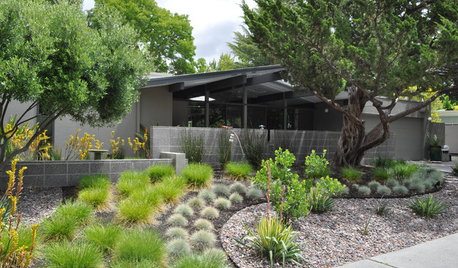
GARDENING GUIDESHow to Pick a Mulch — and Why Your Soil Wants It
There's more to topdressing than shredded wood. Learn about mulch types, costs and design considerations here
Full Story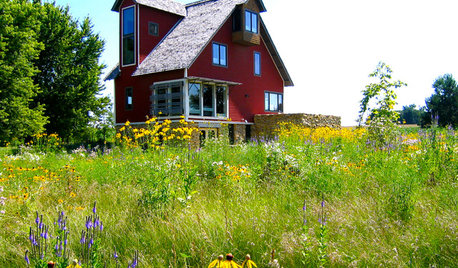
GARDENING GUIDESGardening Solutions for Heavy Clay Soils
What’s a gardener to do with soil that’s easily compacted and has poor drainage? Find out here
Full Story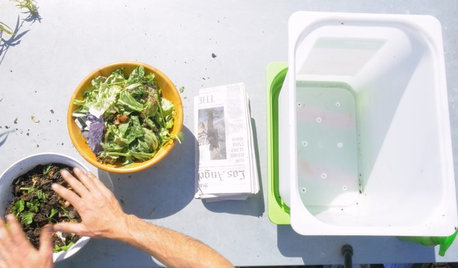
GARDENING GUIDESHouzz TV: Make a Worm Bin for Rich Soil and Happy Plants
A worm-powered compost bin that can fit under a sink turns food scraps into a powerful amendment for your garden. Here’s how to make one
Full Story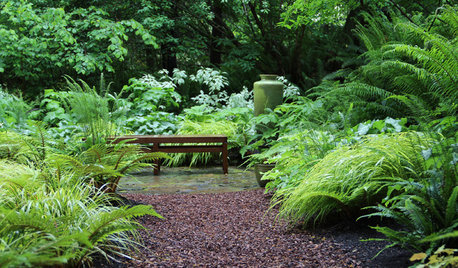
GARDENING GUIDES10 Solutions for Soggy Soil
If a too-wet garden is raining on your parade, try these water-loving plants and other ideas for handling all of that H2O
Full Story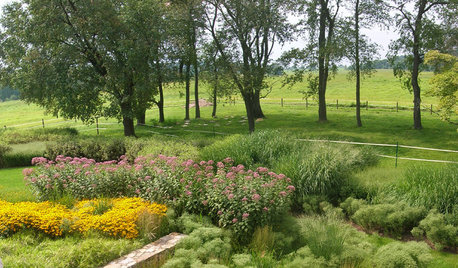
GARDENING GUIDESHow to Stop Worrying and Start Loving Clay Soil
Clay has many more benefits than you might imagine
Full Story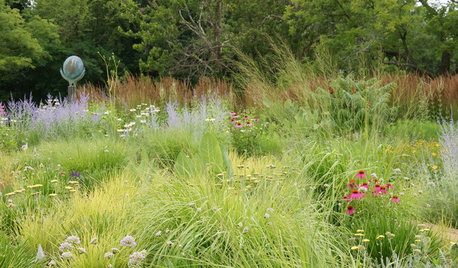
GARDENING GUIDESGet the Dirt on Your Garden’s Soil
Understand how your soil supports your plants so you can ensure your garden’s success
Full Story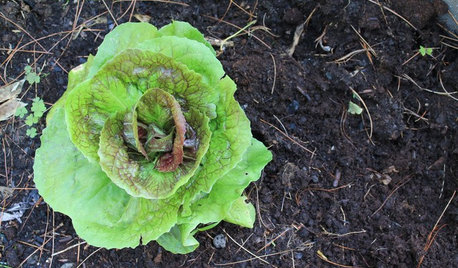
FARM YOUR YARDHow to Get Good Soil for Your Edible Garden
The nutrients in your soil feed the plants that feed you. Here are tips on getting it right — just in time for planting season
Full Story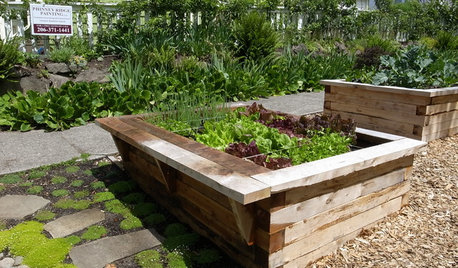
FARM YOUR YARDHow to Build a Raised Bed for Your Veggies and Plants
Whether you’re farming your parking strip or beautifying your backyard, a planting box you make yourself can come in mighty handy
Full Story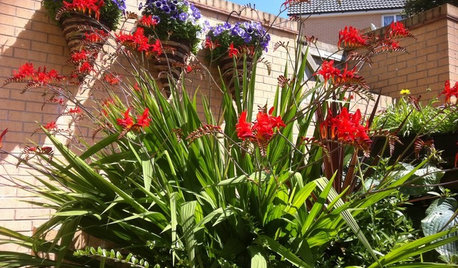
URBAN GARDENSPut Plants to Work in Small Gardens
Grasses, ground cover and more keep small gardens big on visual interest
Full Story
GARDENING GUIDESThe Poop Scoop: Enrich Your Soil With Good Old Manure
Get over the ick factor already — this natural super-ingredient for soil has so many benefits, you'll wonder why you ever went chemical
Full Story



the_gurgler